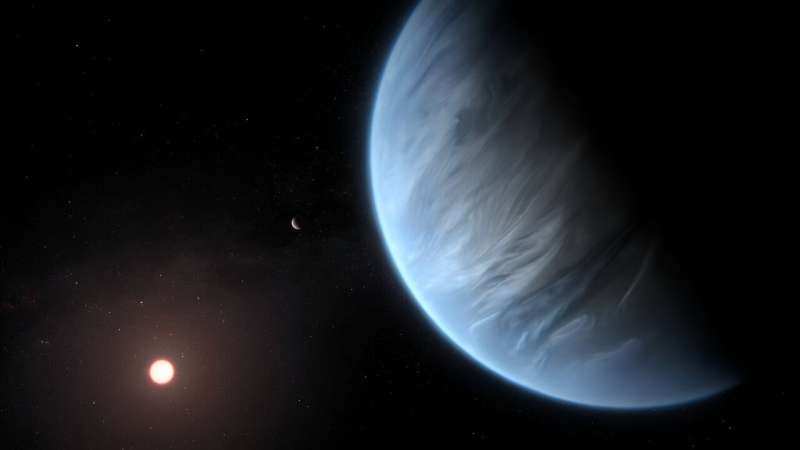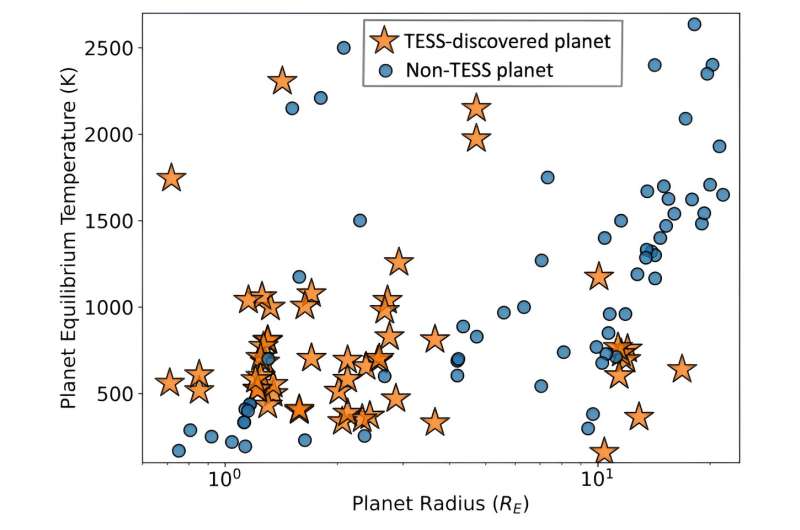This article has been reviewed according to Science X's editorial process and policies. Editors have highlighted the following attributes while ensuring the content's credibility:
fact-checked
preprint
trusted source
proofread
TESS has found thousands of possible exoplanets: Which ones should JWST study?

There are more than 5,000 confirmed exoplanets in our galaxy. That number is going to rise significantly in the next decade. The Transiting Exoplanet Survey Satellite (TESS) has already cataloged more than 4,000 candidate exoplanets, and the PLAnetary Transits and Oscillations of stars (PLATO) is scheduled to launch in 2026.
We will soon have more than 10,000 worlds where life might be able to survive. It's an amazing idea, but with so many exoplanets we don't have the resources to search for life on all of them. So how do we prioritize our search?
That's the focus of a recent paper on the pre-print server arxiv. In it, the team strives to identify the "best in class" candidates for exoplanets that could be further studied by the spectroscopic cameras of the James Webb Space Telescope (JWST). Their list could not only help astronomers find evidence of life but also help us understand the range of atmospheres exoplanets have.
To generate their best choices, the team sorted both known and candidate exoplanets into a category grid arranged by planet radius and estimated surface temperature.
Within each category, they then ranked exoplanets by a transmission spectroscopy metric (TSM) and emission spectroscopy metric (ESM). In other words, those exoplanets with the best chance of having detectable transmission or emission spectra. Since TSM and ESM only focus on the strength of the spectrum relative to the background noise, the team further refined their ranking by the potential for spectra to be detectable using current observatories.

This generated a list of 103 exoplanets from the TESS candidates. These were then observed through the TESS Follow-up Observation Program. Of the initial 103 candidates, 14 exoplanets were independently confirmed. They represent the "best in class" targets for JWST to characterize their atmospheres.
This list will expand as there are further exoplanet observations and more candidate exoplanets, but it represents a solid starting point. JWST is such a powerful and useful telescope that there is tremendous competition for the use of its observing time.
By significantly narrowing the field, this work makes a strong case for these 14 exoplanets to be added to the observation roster. They can provide a baseline of atmospheres that will be extremely useful for future telescopes, such as the Atmospheric Remote-sensing Infrared Exoplanet Large-survey (ARIEL), which is scheduled to launch in 2029.
More information: Benjamin J. Hord et al, Identification of the Top TESS Objects of Interest for Atmospheric Characterization of Transiting Exoplanets with JWST, arXiv (2023). DOI: 10.48550/arxiv.2308.09617
Journal information: arXiv
Provided by Universe Today


















